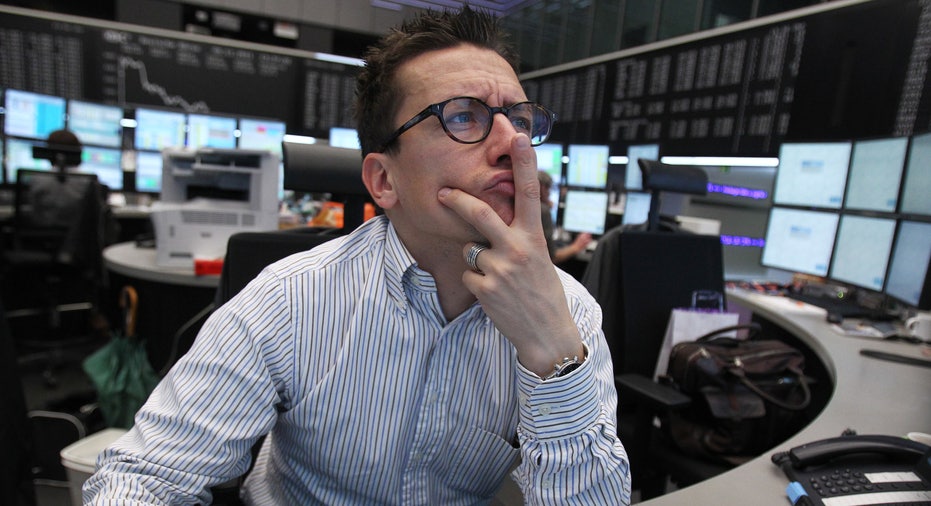Exchange-Traded Notes Are Like ETFs, But Differ

The growing population of exchange-traded funds, or ETFs, presents a rainbow of investment possibilities for tapping into the global capital and commodity markets. But in a world that's brimming with choices, it's worth remembering that some products that appear to be ETFs are nothing of the kind.
On first glance, exchange-traded notes are easily confused with ETFs. Both products are bought and sold on exchanges like stocks, and both are linked to market indexes. But first impressions can be deceiving -- and dangerous for investors who don't know the differences.
The critical issue is that exchange-traded notes don't own anything. Instead, these are products that promise to pay a return -- a promise that's only as sound as the financial wherewithal of the firm behind the pledge. That can be an advantage in some cases, depending on an exchange-traded note's design and its target market. But these products are vulnerable if the issuer gets into financial trouble.
Whereas ETFs are true portfolios that hold securities, exchange-traded notes are unsecured debt obligations -- bonds -- that promise to pay the return of a particular market index, less fees. Credit risk, in other words, is lurking behind every exchange-traded note.
That's not a problem per se. Bonds, after all, are a core asset for most investors. The danger is equating the risk profile of exchange-traded notes to ETFs. Both ETNs and ETFs are subject to market risk, as determined by the investment strategy, but exchange-traded notes also come prepackaged with credit risk.
The bottom line: You could lose some or all of your ETN investment if the issuer ends up in bankruptcy and defaults on its obligations.
A Critical Distinction
ETFs are different because they're designed as exchange-listed mutual funds. That means that ETFs are independent legal entities, and the underlying assets are held by a separate custodial institution. There's a firewall that separates ETF assets from any financial turmoil that afflicts the sponsoring fund company.
In the rare event that an ETF issuer implodes, the ETF's assets won't go down with the corporate ship. Instead, a new manager will take over the affected ETF, or the portfolio will be liquidated and the market value of the proceeds distributed to shareholders.
"Mutual funds and ETFs are structured as appropriate, as regulators see it, for retail distribution," says Deborah Fuhr, a partner at ETF Global Insight, a consultancy in London that analyzes exchange-traded products.
It's another story with exchange-traded notes, which are bound up with the issuer's liabilities, for good or ill. Your investment in these notes could disappear if the issuing firm goes up in smoke. Unlikely? Probably, although the improbable sometimes becomes all too real.
When the investment bank Lehman Brothers collapsed from the strain of the 2008 financial crisis, the firm's exchange-traded notes also failed. Owners of the products were forced to stand in line with other creditors in search of compensation.
A Risky Alternative
If exchange-traded notes are so problematic, why are they attracting assets? There are dozens of notes trading in the U.S., including several with market values that reach into the billions of dollars. One of the largest, iPath Dow Jones-UBS Commodity Index Total Return, was recently valued at roughly $2 billion.
"ETNs, by their nature, allow firms to offer access to asset classes or trading strategies that can be more difficult or costly to replicate in an ETF," explains Jeffrey Smith, an assistant professor of economics and business at the Virginia Military Institute.
Most exchange-traded notes focus on relatively exotic investment corners -- primarily commodities, currencies, market volatility indexes and leveraged investing strategies. In most cases, ETF equivalents are unavailable.
If you're looking for exchange-listed products tracking agricultural commodities, for example, the choices are limited to exchange-traded notes, listed commodity pools and grantor trusts (two additional fund structures).
That's hardly a problem for most investors, who should use commodities and other high-risk alternative asset classes and trading strategies sparingly, if at all.
Some analysts warn that the exchange-traded note structure is often stacked in favor of the issuer with respect to fees. Samuel Lee, an ETF analyst at Morningstar, recently warned in a research essay that many exchange-traded notes put investors in "adversarial relationships" with the issuing firms because they end up costing more than is generally recognized. In some cases, a fair number of hidden expenses may be effectively masked in the ETN design, he revealed.
No wonder why financial advisers recommend that individuals stick with ETFs and mutual funds. "I would look for an alternative to ETNs," says Phil DeMuth of Conservative Wealth Management and co-author (with Ben Stein) of several investing books, including the recent "The Little Book of Bulletproof Investing."
"You don't want to stumble into a headache," he adds.
It's All About Credit Risk
If you're still open to owning exchange-traded notes, the first step is getting comfortable with the issuer's credit rating. You can start by looking at the reports published by Moody's and Standard & Poor's.
But the credit-rating scandal unleashed by the 2008 financial crisis suggests that these evaluations may be out of date, if not misleading.
In other words, be prepared to do your own research or seek the advice of a reputable independent analyst.
If this seems overwhelming to you, you're not alone. Even professionals have a hard time dissecting the risk behind banks, the institutions that issue most exchange-traded notes. That's no trivial issue these days, considering that several bank-sponsored exchange-traded notes have parent firms based in Europe, where the euro crisis continues to roil the Continent's economy and its financial industry.
Fortunately, sticking with ETFs is far from a strategic hardship. There are more than enough choices -- more than 1,400, according to Morningstar -- to build a diversified portfolio.
Copyright 2012, Bankrate Inc.